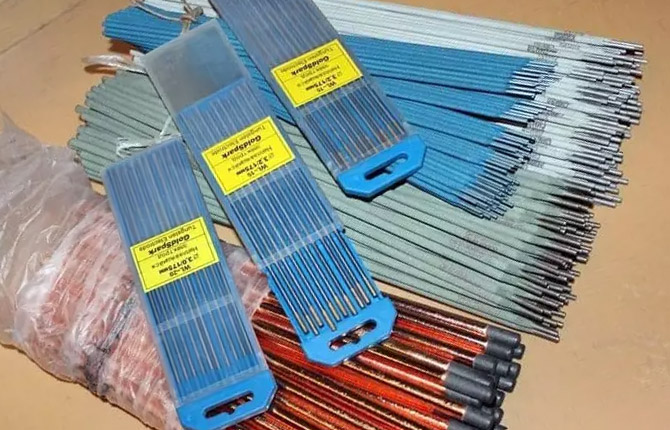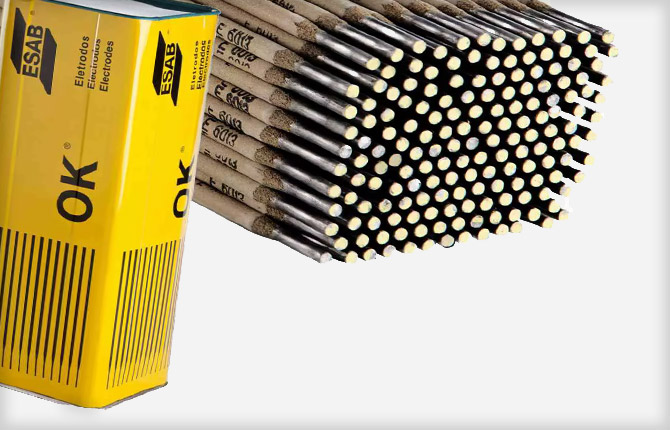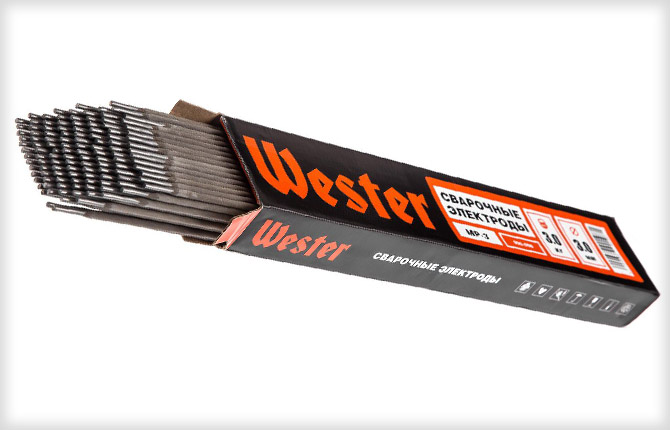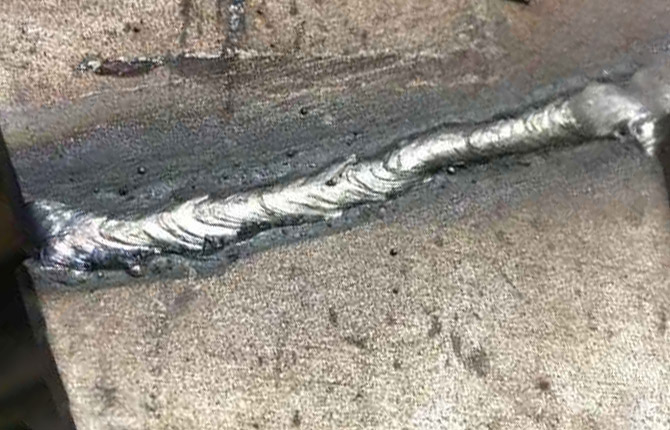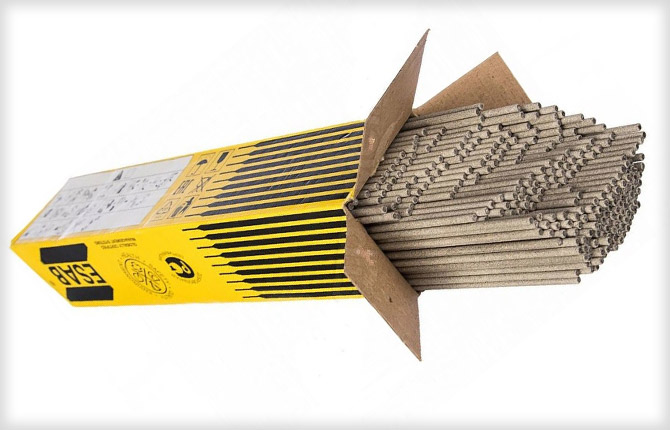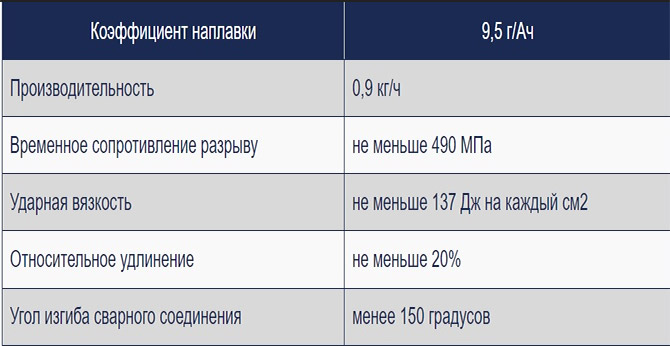TOP 10 best welding electrodes: review, pros and cons
The result of the weld directly depends on the skills of the welder and the selected model inverter, and most importantly - on the quality of welding electrodes.Electrode material, even within the same brand, but from different manufacturers, gives different results. Therefore, it is important to know the advantages and disadvantages of the most popular welding electrodes.
The content of the article:
What to look for when choosing
Welding electrodes are produced to solve various problems. Today the range includes more than 200 types. And this is only the electrode material of the classical scheme - a wire rod plus coating. Externally, welding electrodes are similar. But there are differences, and serious ones. At least by the way the metal of the rod melts and the behavior of the coating material during the arc welding process.
When choosing, you need to know how the electrode behaves when hot under current load and high arc temperature. In addition, purely technological requirements for the welding material are important:
- Ability to weld with direct and alternating current.
- How cleanly does the slag leave the molten metal?
- Complete removal of welding gases without the formation of cavities and pores.
- Uniform saturation of the weld with alloying metals (reduced oxides) and elements.
- How difficult is it to ignite an arc? You can strike with an electrode, or you need to clean the initial area from rust and dirt.
- Suitability of welding electrodes for laying a seam in any position of the workpieces.
In addition, the electrodes must be well stored, the coating material should not crumble or crack during transportation, dry out or become cracked during the pre-drying process.
A high-quality welding electrode is valued for its ability to melt evenly under the influence of an arc without much spattering of the metal, adhere well to the melted edge, and cool without strong thermal stresses and the formation of cracks.
When choosing a brand, attention is paid to the composition of the coating. Electrodes with a core made of a special alloy are selected for the specific brand of metal being welded (cast iron, stainless steel, aluminum). Its composition is determined by GOST or industry standards. Therefore, all manufacturers of special electrodes for welding in the CIS have approximately the same core composition. There's not much to choose from here. Coating is another matter. The coating recipe for electrodes is developed according to standards, but its formulation and application method are selected individually by each manufacturer.
For imported electrodes, the manufacturing company develops everything independently and constantly improves the technology. Sometimes these are the best electrodes for welding just because of the higher quality of the raw materials. The Swedish electrode easily, without burns, welds 2 mm metal where a similar Russian one burns holes in a 3 mm sheet.
Many professional welders try to use welding material for industrial welding. These electrodes are produced in small batches and are made primarily for use on production assembly lines. Their quality is higher, but for amateur inverter welding they are not of interest, since they are designed to operate powerful welding machines with specially selected characteristics.
More mass-produced electrodes for general purposes are used primarily in repairs, small-scale assembly and construction. The quality of welding electrodes from different manufacturers, even within the same type, can vary greatly, although they are produced according to approximately the same scheme.
Based on the composition of the coating, they can be divided into 3 groups:
- Electrodes with rutile and cellulose-rutile coating. The electrode will be marked with the letter “P”. The basis for the coating powder is rutile, a natural mineral.
- Basic coatings. The coating mixture is made on the basis of calcium and magnesium oxides. Some manufacturers add additives to the coating composition that improve coating melting, metal protection and slag waste.
- Acid coatings are made from cellulose paste resins, ferroalloys and halogen-based additives (fluorine and bromine salts) that improve the melting of oxides.
Welding electrodes with coating coatings of the basic type (all UONI brands) are marked with the letter “B”. Basic, because it contains many oxides of active alkaline earth metals, calcium and magnesium. They bind acidic compounds and provide a strong and flexible seam.
Rutile electrodes, both acidic AR and basic RB, are used in the construction and welding of simple structures made of low-carbon steels (usually MP-3 and ANO-21). They are insensitive to arc power and current-voltage characteristics of the welding machine. Good material for beginner amateur welders. Before use, it must be calcined and welding performed at minimal air humidity. Otherwise, the arc turns into a sparkler.
In addition to silicon and ferroalloys, acid coating contains many salts. You can cook directly over a rusty or oxidized surface. The electrode material is well welded to the base metal.Therefore, the slag turns out to be fusible, gases are intensively removed from the weld.
Electrodes with cellulose coating are not used for highly loaded joints due to the large amount of hydrogen released from the melt, the seam is uneven and porous. But it is believed that C-electrodes are suitable for vertical seams.
This is useful! Electric welding for beginners. How to weld vertical and horizontal seams using electric welding.
Rating of the best electrodes for welding
The quality of the weld seam largely depends on the technology used by the manufacturer to prepare the coating material, the method of application and drying, and the metal for the central rod.
If we take into account all the nuances, the rating of the best electrodes for welding will look like this:
- First place – electrodes of the Quattro Elementi brand. Premium class material, can be used for welding carbon steel and stainless steel, using AC and DC current. The seam quality is one of the highest. They are expensive, so they are used mainly for spot repairs of critical parts and mechanisms.
- Second place – welding electrode material Kobelko LB-52U. Basic type coating. Requires preliminary preparation (drying) in a chamber at 300℃ for 10 minutes. The seam is plastic and durable (up to 60 kg/mm2). Due to the absence of cracks and deep penetration, the grade is recommended for welding especially critical steel pipelines.
- Third place - Lincoln Electric 13/55 electrodes (UONI type). The strength of the seam is slightly lower than that of Kobelko, but the affordable price and high ductility of the seam make the electrodes indispensable for welding critical building structures made of alloy and ferrous steels.
But the list of high-quality electrodes for welding is not limited to several items of welding consumables manufactured using special technology. Typically, welding involves a large consumption of electrodes, so it makes sense to consider more affordable electrode materials.
The best rutile coated electrodes
Rutile is not titanium dioxide, although it is abundant in rutile rock. In order to reduce the cost of coating paste, it is often prepared not by mixing individual, carefully purified components, but by restoring and purifying the natural mineral itself. The technology is old, but still in demand.
In imported materials, the coating technology usually uses mixing and multi-layer application of purified components.
Fifth place – ESAB OK46
The quality of the seam is high, but only if the welding is performed by an experienced craftsman. The electrodes can be used on direct and alternating current, and weld seams of complex configurations. In addition, ESAB OK46 electrodes hold the arc well even at low voltage. Capable of grasping an arc with a still cold electrode rod.
Valued for the availability and stability of the welding arc. But it is not recommended for work in an open area; a large increase in air humidity makes the arc unstable.
Fourth place – WESTER MP-3
They are used exclusively for welding thin-walled parts. Used for welding low carbon steels. Usually these are sheets of metal, blanks for tank shells. You can weld a container to store liquids or perform body repairs on a car's lining.
The manufacturing company recommends drying the welding material before welding, but, as practice shows, the coating can withstand even extreme drying options using tack welding with low current at low voltage.
Third place - RSE S-46
This brand is often classified as rutile-cellulose electrodes, but the main flux material remains purified and enriched rutile. Electrodes are valued by professional welders for:
- Arc stability.
- Welding provides a dense, almost pore-free seam, with slight shrinkage of the metal.
- Minimum amount of splashing.
- You can weld by welding even on rusty metal.
The only negative is that RSE S-46 is a specialized grade, designed primarily for welding low-carbon steels. But for construction or the manufacture of inexpensive equipment they are ideal.
Second place – Magmaweld ESR-11
Electrode material for welding all steels, including galvanized sheets. Electrodes are produced by the Swiss bureau "Magma". These are one of the best welding electrodes for connecting parts of boilers and high-pressure pipelines of small and medium diameters.
They are valued by craftsmen for the high quality of the weld; the connection is virtually defect-free, without microcracks. The arc burns stably during operation, without sparks and burns, which are characteristic of most rutile materials.
The only downside is the formation of a large amount of slag.
First place – Resanta MZ
Electrodes can be used for alternating current welding when joining parts made of structural and low-carbon steel. The quality of DC welding of alloy and tool steels is somewhat worse due to the weld being too soft and fast.In this case, you have to go through the seam several times. In this case, the required depth of welding is achieved and the high ductility of the welded metal is maintained.
Resanta MZ is one of the few electrodes for welding that provides weld strength at the level of 50-55 kg/mm2. This is lower than that of models with the main type of coating, but for rutile this is one of the best indicators.
This will come in handy! Types of welding machines – subtleties of choice and application features.
Best Basic Coated Electrodes
It cannot be said that electrode material coated with magnesium and calcium oxides is much better than models with rutile coating. Basic electrodes are used for welding heavy and powerful parts, mainly where strength and high impact strength of the joint are primarily important.
Fifth place – Kedr TsL-11
Used for manual welding with a short arc to connect parts made of stainless steel 12Х18Н9Т. Cedar TsL-11 were originally designed to work with alloyed metals and alloys. Therefore, the temperature of the welding arc is slightly higher than that of rutile coatings. In this case, it is necessary to perform welding with a short arc. This requires a certain level of skill from the welder. If you lengthen the arc a little, the bath of molten stainless steel will begin to actively absorb nitrogen from the air. As a result, the seam will crack as it cools.
Cedar TsL-11 can be used as base electrodes for welding any structural and tool steels. The central rod is made of steel SV08Ch19N10B, and the main coating has an additive of ground fluorspar. Therefore, during the welding process with a Kedr TsL-11 electrode, caustic smoke that hurts the eyes may appear in the air. You only need to work under a hood.
Fourth place – ESAB SSSI 13
If you are not afraid of burns and cook with a short arc, then the electrodes will show their best side. But this requires the experience and skills of a professional welder. The welding seam is stronger than that of electrodes with rutile coating, on average 55-60 kg/mm2. The weld metal is ductile, without cracks or residual shrinkage.
Recommended for welding any profile equipment made of low-alloy steels.
Third place – OZL-8
Electrodes produced by the Losinoostrovsky plant. Designed for welding stainless steel sheets. Welding stainless steel sheets manually is very difficult even for a professional. But OZL-8 provides a uniform monolithic joint without cracks with a strength of up to 54 kg/mm2, which in itself is a good result.
At the same time, sheets can be welded with any arrangement of workpieces, and vertical and ceiling seams can be made.
The only negative is the presence of a process of recrystallization of the seam. That is, OZL-8 is not used to connect critical, highly loaded parts. Plus, before starting welding, the welding material must be dried at 200℃ for 50-60 minutes.
Second place – ESAB OK53.70
Welding electrode material with a basic (caustic) type of coating. Produced in Sweden by ESAB Corporation. It is distinguished by high quality welding on carbon steels. It can be used to connect parts made of low-alloy steel. Suitable for beginners working with inverter equipment.
Can be cooked with alternating and direct current. Of all the base coat brands available in the CIS, ESAB OK53.70 is considered one of the best. When used correctly, the quality of the seam is much higher than when using rutile. Connection strength – 53 kg/mm2, yield strength – 44 kg/mm2.
ESAB OK53.70 is widely used for welding pipes and metal structures with increased rigidity requirements. In general, the quality of penetration of metal grade OK 53.70 is noticeably higher than rutile, while there is practically no burnout of alloying additives and ferroalloys.
As with most base coatings, ESAB OK53.70 requires a drying period of 2 hours at temperatures up to 350℃ before welding.
First place - TsU-5
Designed for industrial applications. Typically, TsU-5 is used for welding huge frames, plates, and casings of highly loaded units (pumps and turbines). The central rod is made of Sv-08 wire. The main coating is made on the basis of calcium oxides with the addition of fluoride salts.
Can be used for welding in almost any position of workpieces.
The advantage of TsU-5 is the high heat resistance of the seam. After normalization, the joint can withstand heating up to 400℃ without losing the strength and ductility of the seam. Before starting work, it is necessary to keep it in a heat chamber at a temperature of 300-350℃.
The range of electrodes for welding is huge. There are plenty to choose from, but before making a decision, you need to know exactly the characteristics and operating conditions of the future welded joint. In addition, during the preparation process, the material must be calcined and the surfaces to be welded must be cleaned. Therefore, dirt and rust significantly impair the strength of the seam even when using expensive and high-quality electrodes.
Tell us about your choice of electrode material. Which brands are best for welding and why?
